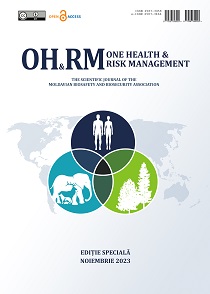Abstract
Introduction. The Electronic Integrated Disease Surveillance System (EIDSS) supports current infectious disease surveillance and monitoring activities by integrating human and veterinary case data. It also enables direct data reporting to the World Health Organization (WHO). Consequently, ensuring the quality and completeness of data is a top priority at all levels, from primary health care institutions to the Ministry of Health. Reviewing and evaluating the effectiveness of EIDSS for infectious diseases against the stated objectives allows the development and implementation of evidence-based measures at the Ministry of Health level to maintain the continuous improvement of the population's health status. In Azerbaijan, the EIDSS was introduced in 2010. Subsequently, recognizing the need for ongoing monitoring of the surveillance database, a system of administrative indicators to assess the completeness and quality of electronic reports was established. The issues of timeliness, quality, and completeness of the database, especially concerning zoonotic infections, are pertinent in Azerbaijan.
Aim. To evaluate the effectiveness of the implemented system of administrative indicators of the completeness and quality of filling out reports for zoonotic infections (brucellosis and anthrax).
Material and methods. The EIDSS database of the Ministry of Health and the indicator scores for initially reported cases of brucellosis and cutaneous anthrax among people from 2018 to 2022 were analyzed. The conventionally assumed threshold value for surveillance indicators is 80% of all cases reported to the system.
Results. In Azerbaijan, the burden of brucellosis among people averages 300±28 cases per year, and cutaneous anthrax averages 18±5 cases annually. Reporting is conducted by medical institutions at the first level, with laboratory confirmation of these zoonotic diseases carried out by the Special Dangerous Infections Control Centre, and epidemiological investigations following a One Health approach. The system of administrative indicators comprises three main blocks: monitoring the reporting of an emergency notification for a disease case, monitoring the investigation of a case, and monitoring laboratory results. The maximum score for these blocks is 1.25, 3.05, and 0.7, respectively. Over the years of observation, the country consistently achieved the designated maximum score for especially dangerous zoonotic infections among people. However, the indicator for case investigation monitoring reached its lowest point in 2020 (2.15), likely due to the added burden of the pandemic on all Centers for Hygiene and Epidemiology across the country. The indicator for monitoring laboratory results consistently met the target score each year, with a slight difference between confirmed cases (0.7) and cases with negative test results (0.5).
Conclusions. The introduction of administrative indicators of the completeness and quality of filling in electronic reports showed the high efficiency of their use, despite the stable high incidence of brucellosis among people and the increase in cases of human cutaneous anthrax. It is recommended to apply the developed effective administrative indicators in subsequent versions of the electronic system and periodically conduct evaluation.
|
 Views: 100|
|
Views: 100|
|
